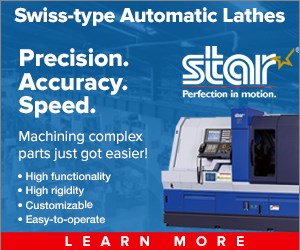Jim’s a Hardware Man
Troubleshooting is a learned skill, and manufacturing’s troubleshooters are aging out. While we should appreciate them while we have them, we must prepare for a day when we won’t.
Growing up I loved visiting the hardware store with my dad. The local Ace Hardware in Wauwatosa, Wisconsin, was your classic hardware store. Squeaky wood floors, a counter running one end of the store to the other, a ladder on a rail and behind it row upon row of cubbies and drawers flush with screws, bolts, washers, cotter pins and gaskets of all sizes. And the smell. I loved the smell of that store, a perfect concoction of machine oil, wax, fertilizer, wood and metal. A smell like no other.
And then there were the people that worked there, tidily dressed in button-down white shirts and blue pants, ready with a “how can I help you” the moment the little bell on the entrance door signaled our arrival. I don’t remember many of them, but I remember Jim; as I recall, a taller fellow with neatly cropped hair and a friendly smile.
The years have clouded my memory of what weekend project my dad and I were into, but it necessitated a trip. As we finished our business at the hardware store and ducked out the same door we entered, the bell ringing again as we departed, my dad remarked, “Jim’s a hardware man.”
“What?”
“Jim’s a hardware man. The people who work here are problem-solvers. You come to them with a project and they tell you how to do it. That’s what hardware men do. There’s a difference between people who just work in a store and people who solve problems.”
(Pausing for a moment to beg forgiveness for the gender offense. “Hardware person” doesn’t have quite the same ring to it and the rules were a little bit different in the 1970s.)
For reasons of which I’m not quite certain, that conversation with my dad always stuck with me. A recent episode of the TechEd Podcast brought it all back. Our guest was Shane Farritor, the chief technology officer of Virtual Incision and a Professor at the University of Nebraska – Lincoln. He literally designs and builds robots to perform surgery in space (techedpodcast.com/farritor/).
When asked about what sparked his interest in innovation, Farritor spoke of growing up in a small central Nebraska town where his family owned the hardware store.
“I kinda grew up in that hardware store and specifically in the back of the hardware store where there was lots of pieces and parts and tinkering to be done there,” notes Farritor.
“Our hardware store was a Hallmark movie sort of thing, an enormous wood stove in the middle, a checkerboard and a couple stools and all that stuff, but everybody that came in there had a problem and they wanted to address it in the next 15 or 20 minutes and you could help them. And you had some resources and some constraints, and when you [consider] the things about innovation, all those things are present there in their 15-minute visit to the hardware store, so it’s like speed training for innovation.”
Speed training for innovation. I love that. Interesting the similarities between hardware and manufacturing. Having just fifteen minutes to solve a problem sounds quite familiar, does it not?
I think of the third shift supervisor who, using bubblegum and paperclips, figures out a way to keep production running until the reinforcements show up in the morning. The 25-year maintenance team veteran who has seen it all before and troubleshoots an equipment problem in mere minutes while a less-experienced individual might need an entire shift to figure it out. The production scheduler who moves jobs from machine to machine, perfectly balancing production. The transportation lead who re-routes trucks on the fly, ensuring that pickups and deliveries run on time. The list goes on. Sometimes we don’t give ourselves enough credit for what amazing problem-solvers manufacturers are.
Nor do we invest enough resources to create the next generation of problem-solvers in manufacturing. As a manufacturing leader, I often joke that our troubleshooting process is to start at the beginning of the line and replace parts until the line starts working again. While I still think that’s funny, I worry that the humor might soon become reality. Troubleshooting is a learned skill and manufacturing is losing its troubleshooters. Losing our hardware men. Our talent is aging out. In many plants, the 25-year maintenance veteran, the ace production scheduler or the brilliant transportation lead all have their fair share of gray hairs. Try as we might to hang on to them, those people won’t be with us forever.
Appreciate them while we have them, but prepare for a day when we won’t. Recruit, train and educate manufacturing’s next generation of problem-solvers and troubleshooters.
Wauwatosa’s Ace Hardware closed a little over a decade ago after 116 years in business. There’s no guarantee our problem-solvers will be around forever.
Jim’s a hardware man. We could use more like him.
Read Next
5 Aspects of PMTS I Appreciate
The three-day edition of the 2025 Precision Machining Technology Show kicks off at the start of April. I’ll be there, and here are some reasons why.
Read MoreDo You Have Single Points of Failure?
Plans need to be in place before a catastrophic event occurs.
Read MoreA Tooling Workshop Worth a Visit
Marubeni Citizen-Cincom’s tooling and accessory workshop offers a chance to learn more about ancillary devices that can boost machining efficiency and capability.
Read More









.jpg;maxWidth=300;quality=90)









